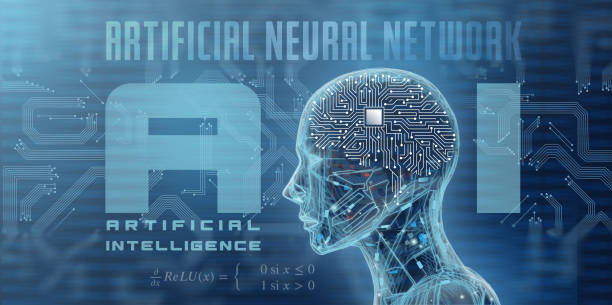What is an Artificial Intelligence Robot and How Does it Work?
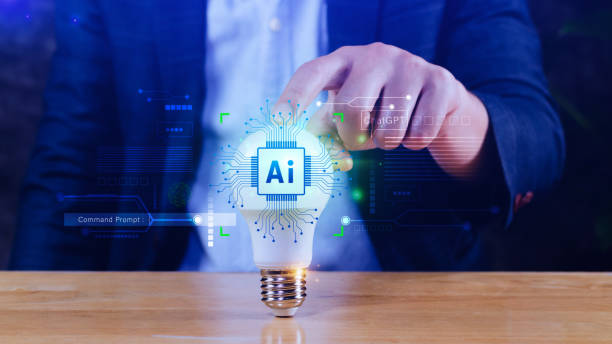
An artificial intelligence robot is a combination of two fascinating fields: #robotics and #artificial_intelligence.
These robots are not only capable of performing physical tasks, but also utilize artificial intelligence algorithms to learn, make decisions, and solve complex problems.
In other words, they are machines that can think and act based on their thinking.
An artificial intelligence robot uses sensors to gather information about its surrounding environment. This information is analyzed by powerful processors, and based on machine learning algorithms, necessary decisions are made.
These decisions can include movement, manipulating objects, communicating with humans, or even solving complex mathematical problems.
Artificial intelligence robots have applications in various industries, including manufacturing, healthcare, logistics, and even entertainment.
The main difference between traditional robots and artificial intelligence robots is that traditional robots are programmed to perform specific and predetermined tasks, while artificial intelligence robots are capable of learning from their experiences and adapting to new situations.
This flexibility allows them to perform better in dynamic and unpredictable environments.
For example, an artificial intelligence robot can automatically detect product defects in a factory and adjust the production process if needed.
Artificial intelligence robots use various techniques such as deep learning, neural networks, and natural language processing to understand and respond to their surroundings.
Artificial Intelligence allows robots to interact with humans naturally and even understand their emotions.
Did you know that customers’ first impression of your company is your website? Multiply your business’s credibility with a powerful company website from Rasaweb!
✅ Custom and eye-catching design tailored to your brand
✅ Improved user experience and increased customer attraction
⚡ Get free consultation!
Amazing Applications of Artificial Intelligence Robots in Today’s World
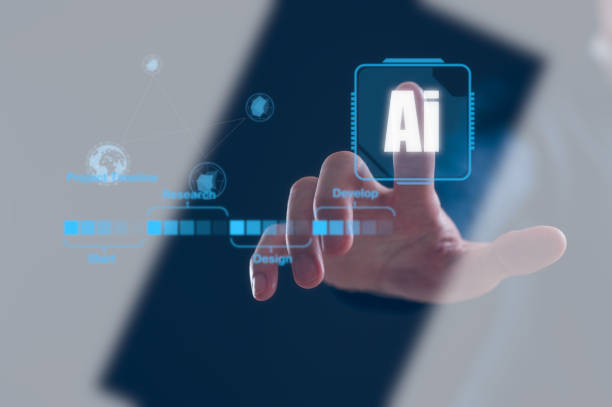
The applications of artificial intelligence robots are very broad and diverse and have affected almost all aspects of our lives.
In the manufacturing industry, artificial intelligence robots are used to perform repetitive, dangerous, or precise tasks.
These robots can work around the clock without fatigue and significantly improve the quality of products.
In the field of healthcare, artificial intelligence robots are used for precise surgeries, diagnosing diseases, and providing care services to patients.
These robots can perform surgery with great precision and reduce the risk of side effects.
In the logistics industry, artificial intelligence robots are used for warehousing, transportation, and delivery of goods.
These robots can automatically sort packages and send them to the desired destination.
In the field of customer service, artificial intelligence robots are used to answer customer questions, provide technical support, and conduct financial transactions.
These robots can be available 24 hours a day, 7 days a week, and quickly answer customer questions.
Artificial intelligence robots are even used in the field of entertainment.
These robots can be used as toys, companion animals, or even artists.
For example, artificial intelligence robots can draw pictures, compose music, or even write stories.
Artificial intelligence robots are changing the way we live and work, and they are expected to play an even more important role in society in the future.
This emerging technology provides new opportunities to improve the quality of human life and helps us face complex challenges.
Advantages and Disadvantages of Using Artificial Intelligence Robots

The use of artificial intelligence robots has several advantages and disadvantages that should be carefully considered.
The advantages of using artificial intelligence robots include increased productivity, reduced costs, improved quality, increased safety, and better service delivery.
Artificial intelligence robots can work around the clock without fatigue, reduce human error, and perform dangerous tasks.
However, the use of artificial intelligence robots also has its drawbacks.
These drawbacks include high development and deployment costs, the need for technical expertise, ethical and social concerns, and the potential for job losses.
Developing and deploying artificial intelligence robots requires significant investment in research and development, equipment, and training.
Also, the use of artificial intelligence robots requires technical expertise for planning, maintenance, and repair.
Ethical and social concerns related to the use of artificial intelligence robots include issues such as privacy, discrimination, and accountability.
The potential for job losses due to the replacement of human labor with artificial intelligence robots is also a serious concern.
Given the advantages and disadvantages of using artificial intelligence robots, it is necessary to develop and deploy this technology carefully and cautiously.
We must develop appropriate policies and regulations to regulate the use of artificial intelligence robots and pay attention to the education and retraining of the workforce to adapt to this new technology.
Artificial intelligence robots have a high potential to improve the quality of human life, but we must use them responsibly and ethically.
| Advantage | Description |
|---|---|
| Increased Productivity | Robots can work continuously without needing rest. |
| Reduced Costs | Reduced need for human labor and reduced human errors. |
| Improved Quality | Greater accuracy and consistency in performing tasks. |
| Increased Safety | Performing dangerous tasks without endangering human lives. |
| Better Service Delivery | Fast and accurate response to customers. |
Challenges Facing the Development of Artificial Intelligence Robots
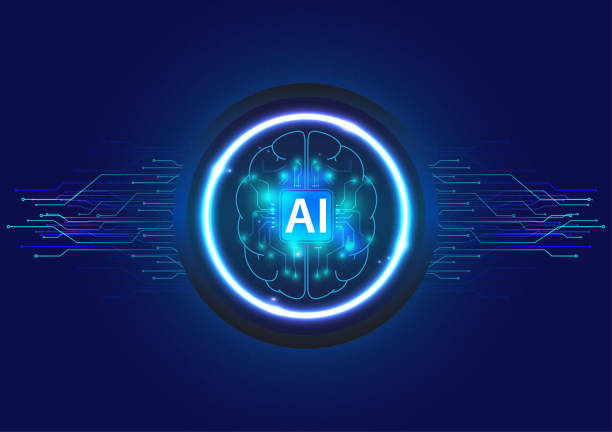
The development of artificial intelligence robots faces several challenges that must be overcome to advance in this field.
One of the most important challenges is collecting and processing sufficient and high-quality data.
Artificial intelligence algorithms need a lot of data to learn and improve their performance.
This data must be accurate, complete, and error-free.
Another challenge is developing more advanced and efficient artificial intelligence algorithms.
Current artificial intelligence algorithms still have limitations in many areas and cannot fully replace humans.
Another challenge is developing suitable hardware for artificial intelligence robots.
Artificial intelligence robots need powerful processors, accurate sensors, and efficient motors.
This hardware must be lightweight, small, and energy-efficient.
Another challenge is solving the ethical and social issues related to the use of artificial intelligence robots.
It must be ensured that artificial intelligence robots are used responsibly and ethically and do not violate human rights and privacy.
Artificial intelligence robots must be designed to be safe and reliable, and they must be able to be quickly stopped in the event of an error.
To overcome these challenges, cooperation between researchers, engineers, policymakers, and ordinary people is needed.
More investment should be made in research and development of artificial intelligence robots, and public education and awareness in this area should be increased.
Artificial intelligence robots have a high potential to improve human lives, but they must be developed responsibly and ethically.
Are you tired of your online store not generating as much revenue as its potential? Rasaweb, a specialist in designing professional online stores, solves this problem forever!
✅ Increased sales rate and revenue
✅ High loading speed and unique user experience
⚡ Get free consultation on online store design
What Will the Future of Artificial Intelligence Robots Look Like?
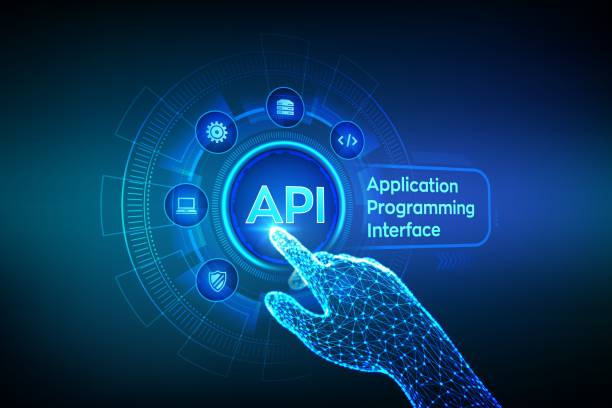
The future of artificial intelligence robots looks very bright and promising.
With the advancement of technology, artificial intelligence robots are expected to become smarter, more efficient, and more flexible.
These robots will be able to perform more complex tasks and help humans in more areas.
Artificial intelligence robots will play a more important role in our daily lives in the future.
They can be present in homes, workplaces, hospitals, schools, and even on the streets and help us with various tasks.
Artificial intelligence robots can help us care for the elderly and children, do housework, shop, drive, teach, and even treat diseases.
Artificial intelligence robots are expected to work more closely with humans and act as our colleagues, assistants, or even friends.
These robots will be able to communicate with humans naturally, understand their emotions, and respond to their needs.
However, it should also be noted that the development of artificial intelligence robots is also accompanied by challenges.
It must be ensured that artificial intelligence robots are used responsibly and ethically and do not violate human rights and privacy.
Artificial intelligence robots must be designed to be safe and reliable, and they must be able to be quickly stopped in the event of an error.
The future of artificial intelligence robots is in our hands, and we must shape it carefully and cautiously.
Artificial Intelligence Robots and Their Impact on the Labor Market
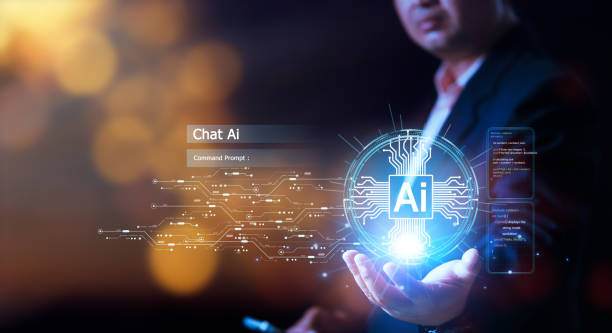
The impact of artificial intelligence robots on the labor market is a controversial topic.
On the one hand, some people are concerned that artificial intelligence robots will lead to job losses and increase unemployment.
On the other hand, others believe that artificial intelligence robots create new job opportunities and increase productivity and economic growth.
The reality is that the impact of artificial intelligence robots on the labor market is complex and multifaceted.
Artificial intelligence robots can eliminate some jobs, especially jobs that are repetitive, simple, or dangerous.
However, artificial intelligence robots can also create new jobs, especially jobs that require expertise, creativity, and interpersonal skills.
Also, artificial intelligence robots can increase productivity and economic growth, which can lead to the creation of more jobs.
In order to benefit from the advantages of artificial intelligence robots in the labor market and prevent its disadvantages, we must adopt appropriate policies and programs.
We must pay attention to the education and retraining of the workforce to adapt to new technologies and teach them the skills needed for future jobs.
We must also support entrepreneurship and innovation and create new job opportunities.
Artificial intelligence robots have a high potential to improve the labor market and increase economic well-being, but we must use them responsibly and intelligently.
How to Learn and Train an Artificial Intelligence Robot
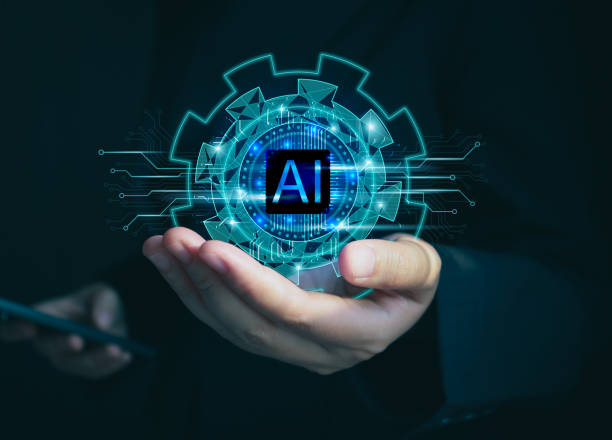
Learning and training artificial intelligence robots is one of the most important aspects of developing this technology.
Artificial intelligence robots need to learn and train to perform various tasks.
This learning can be done in various ways, including supervised learning, unsupervised learning, and reinforcement learning.
In supervised learning, the artificial intelligence robot is trained using labeled data.
This data includes inputs and expected outputs.
The artificial intelligence robot tries to create a model by learning from this data that can predict the correct outputs for new inputs.
In unsupervised learning, the artificial intelligence robot is trained using unlabeled data.
The artificial intelligence robot tries to discover hidden patterns and structures by analyzing this data.
In reinforcement learning, the artificial intelligence robot is trained using trial and error.
The artificial intelligence robot receives a reward or penalty for taking various actions in an environment.
The artificial intelligence robot tries to create a policy by learning from these rewards and penalties that can receive the most reward.
To train an artificial intelligence robot, a lot of high-quality data is needed.
Also, advanced machine learning algorithms and powerful hardware are needed.
Training an artificial intelligence robot is a complex and time-consuming process, but it is essential for developing intelligent and efficient artificial intelligence robots.
By learning and improving their performance, artificial intelligence robots will be able to perform more complex tasks and help humans in more areas.
Types of Artificial Intelligence Robot Learning Methods
| Learning Method | Description | Applications |
|---|---|---|
| Supervised Learning | Using labeled data for training | Image recognition, price prediction |
| Unsupervised Learning | Using unlabeled data to discover patterns | Customer clustering, anomaly detection |
| Reinforcement Learning | Learning through trial and error and receiving rewards | Games, robotics |
Ethical Considerations in the Design and Use of Artificial Intelligence Robots

The design and use of artificial intelligence robots require attention to several ethical considerations.
Artificial intelligence robots must be designed to be safe, reliable, and accountable.
It must be ensured that artificial intelligence robots are used responsibly and ethically and do not violate human rights and privacy.
One of the most important ethical considerations is the issue of accountability.
If an artificial intelligence robot makes a mistake and causes damage, who will be responsible? Is the manufacturer, the user, or the artificial intelligence robot itself responsible?
This issue requires careful consideration and the determination of appropriate rules and regulations.
Another issue is the issue of privacy.
Artificial intelligence robots can collect and process a lot of information about humans.
It must be ensured that this information is kept safe and not shared with others without permission.
Artificial intelligence robots must be designed to respect human privacy.
Another issue is the issue of discrimination.
Artificial intelligence robots may inadvertently make decisions that lead to discrimination against certain groups of people.
It must be ensured that artificial intelligence robots act fairly and without discrimination.
Artificial intelligence robots must be designed to follow ethical and human values.
Research shows that 80% of customers trust companies with professional websites more. Does your current website inspire that trust?
With Rasaweb’s corporate website design services, solve the problem of customer distrust and weak online image forever!
✅ Create a professional image and increase customer trust
✅ Attract more sales leads and grow your business
⚡ Get free consultation
Artificial Intelligence Robots in Iran: Challenges and Opportunities

The development of artificial intelligence robots in Iran faces several challenges and opportunities.
The challenges include a lack of investment, a lack of technical expertise, infrastructure problems, and legal barriers.
However, Iran has a high potential for developing artificial intelligence robots.
Iran has a young and educated workforce, reputable universities, and knowledge-based companies active in the field of artificial intelligence.
Also, Iran has many needs in various fields such as industry, agriculture, health, and treatment that artificial intelligence robots can help meet.
To develop artificial intelligence robots in Iran, more investment is needed in research and development, education and training of specialized personnel, creating suitable infrastructure, and removing legal barriers.
Also, cooperation between universities, knowledge-based companies, and the government is needed.
The government can help develop artificial intelligence robots in Iran by providing facilities, incentives, and financial support.
Artificial intelligence robots can play an important role in Iran’s economic and social development.
Artificial intelligence robots can help increase productivity, reduce costs, improve quality, and provide better services.
Also, artificial intelligence robots can help create new jobs and increase exports.
Iran must use the existing opportunities in the field of artificial intelligence robots with careful and purposeful planning and become one of the leading countries in this field.
Artificial intelligence robots have a high potential to transform Iran’s economy and society.
How to Build an Artificial Intelligence Robot: A Step-by-Step Guide
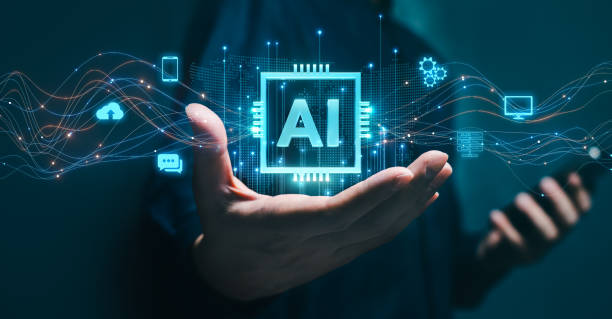
Building an artificial intelligence robot is a complex and challenging project, but with the necessary knowledge and skills, it can be done.
To build an artificial intelligence robot, you must first define your goal.
What do you want your robot to do? After defining the goal, you must select the required hardware and software.
The hardware of an artificial intelligence robot includes the body, motors, sensors, and processor.
The software of an artificial intelligence robot includes the operating system, artificial intelligence libraries, and machine learning algorithms.
After selecting the hardware and software, you must design and assemble your robot.
The design of the robot should be such that it can easily perform the desired tasks.
After assembling the robot, you must install the software on it.
Then, you must train your robot.
To train the robot, a lot of high-quality data is needed.
You can use existing data or collect the data yourself.
After training the robot, you must test it and make the necessary changes if needed.
Building an artificial intelligence robot is an iterative process and may require frequent changes.
With patience and perseverance, you can build an efficient and intelligent artificial intelligence robot.
This robot can help you in various fields and make your life easier.
Building an artificial intelligence robot is an exciting and educational experience and can help you learn the concepts of artificial intelligence and robotics.
There are many robotics resources and artificial intelligence resources that can help you on this path.
Frequently Asked Questions
| Question | Answer |
|---|---|
| What is an artificial intelligence robot? | It is a robot that uses artificial intelligence capabilities to understand the environment, reason, learn, and make decisions to perform complex tasks independently. |
| What is the main difference between a regular robot and an artificial intelligence robot? | Artificial intelligence robots can learn and adapt to their environment, while regular robots usually operate based on fixed and predetermined programs. |
| In what areas are artificial intelligence robots used? | In areas such as industry (production lines), medicine (robotic surgery), services (customer support, smart vacuum cleaners), exploration (space and underwater), and entertainment. |
| How do artificial intelligence robots learn? | They acquire new skills through machine learning (Machine Learning) and deep learning (Deep Learning) algorithms, by analyzing big data and identifying patterns. |
| Can artificial intelligence robots have emotions? | Currently, no. They can identify or simulate emotions, but they do not have the real experience of emotions like humans. |
| What are the most important advantages of using artificial intelligence robots? | Increased productivity, reduced human error, performing dangerous or repetitive tasks, and providing innovative and efficient services. |
| What challenges exist in developing artificial intelligence robots? | The need for abundant and high-quality data, the complexity of algorithms, ethical issues, cybersecurity, and the high cost of research and development. |
| Are artificial intelligence robots dangerous to humans? | By observing safe design principles and ethical regulations, no. Concerns are more about social and economic impacts, such as changes in the labor market. |
| What is an example of an artificial intelligence robot in everyday life? | Smart vacuum cleaner robots (such as Roomba) that automatically map and clean the house, or smart voice assistants (such as Siri and Alexa). |
| How is the future of artificial intelligence robots predicted? | They are expected to become smarter, more autonomous, and capable of more complex interactions with humans, and to play a more prominent role in industry, medicine, transportation, and everyday life. |
And other services of Rasa Web advertising agency in the field of advertising
Smart custom software: An effective tool to attract customers with the help of a search engine optimized content strategy.
Smart Sales Automation: An effective tool to increase sales by customizing the user experience.
Smart Customer Journey Map: Transform sales growth with accurate audience targeting.
Smart SEO: An exclusive service to increase website visits based on intelligent data analysis.
Smart Direct Marketing: Transform user engagement with the help of a search engine optimized content strategy.
And more than a hundred other services in the field of internet advertising, advertising consulting, and organizational solutions
Internet Advertising | Advertising Strategy | Advertorial Report
Resources
What is the Application of Artificial Intelligence?
,What is Artificial Intelligence?
,Everything About Artificial Intelligence
,What is Artificial Intelligence? | Tarfandestan
? Transform your business in the digital world and achieve your big goals with Rasa Web Afarin Digital Marketing Agency. We pave the way for your success by providing services such as professional website design, SEO, and content marketing.
📍 Tehran, Mirdamad Street, next to Central Bank, South Kazerun Alley, Ramin Alley No. 6

